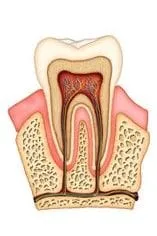Root Canal Therapy Lake Worth, FL And Greenacres, FL

Root canals, also called endodontic procedures, are the modern way to save a tooth that is painful or badly diseased. They are nothing to be afraid of, because with today’s modern techniques and materials, your root canal treatment can be more comfortable than you ever thought possible. Your dentists at Big Smile Dentistry in Lake Worth, FL and Greenacres, FL want you to know the truth about root canal therapy and how it can help save your smile.
A root canal may be needed because there is some damage or infection to the inside of your tooth, in an area called the pulp chamber. The pulp chamber is where the blood and nerve supply of your tooth is. The pulp of your tooth can become damaged from a traumatic injury to your teeth, or from deep decay that has reached the pulp chamber.
Signs You May Need A Root Canal
If you are experiencing any of the following symptoms, you may need a root canal to save your tooth. Don't suffer from pain or risk further infection, call our office right away to make an appointment.
Some signs and symptoms that indicate you may need a root canal include:
- Acute, sharp pain when you bite down
- Throbbing pain and pressure in your mouth
- Continuous pain after you’ve eaten hot or cold foods
- Redness, swelling, or a white bump on your gums at the tooth root
- Pus or drainage from your gums at the tooth root
- A dark discoloration of the tooth
You may not have any pain or noticeable symptoms and still need a root canal. The only way you can find out for certain if you need a root canal is visiting your Greenacres or Lake Worth dentist. Your dentist can take x-rays to look for a dark area (radiolucency) at the tip of the tooth root. Pulp testing can also be done to test for temperature sensitivity, one of the hallmarks of needing a root canal, and tooth vitality.
Root Canal Procedure
The root canal procedure requires at least two appointments and begins with creating a small opening in your tooth to access the pulp chamber. Using tiny instruments called files your dentist will clean out the inside of your tooth, removing infected tissue. A sedative material is placed inside your tooth and the tooth is allowed to “calm down” for a period of time.
After your tooth is no longer painful, your dentist will further clean and shape the inside of your tooth. Gutta-percha, an inert rubbery material, is placed inside your tooth, and the tooth opening is sealed up with a permanent filling. If your tooth had extensive decay, your doctor may suggest placing a crown over it to strengthen and protect the tooth from breakage. As long as you continue to care for your teeth and gums with regular brushing, flossing, and checkups, your restored tooth can last a lifetime.

